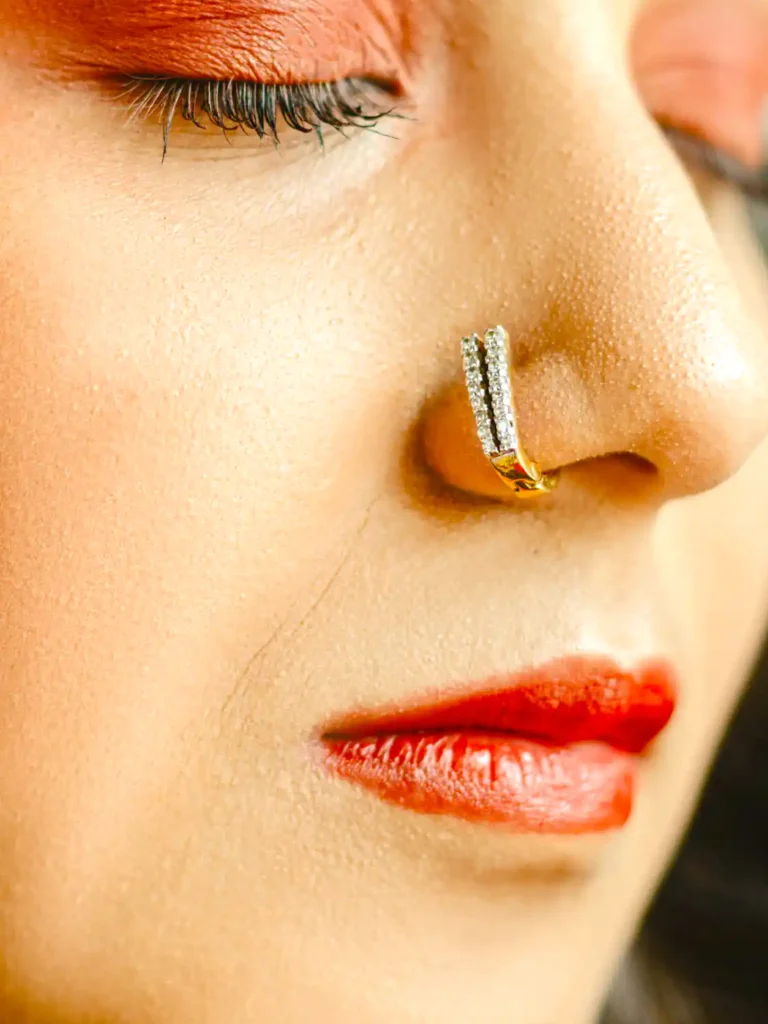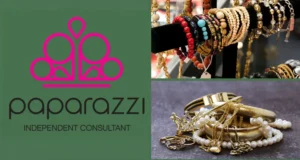Nose rings have been a popular form of body modification for centuries, with both men and women adorning their noses for various reasons. However, the practice of wearing nose rings is particularly prevalent among women, and it has been an integral part of many cultures and traditions.
While some may view it as a mere fashion accessory, the reasons behind why females wear nose rings are often multifaceted and steeped in symbolism, cultural significance, personal expression, and more. From being a symbol of wealth and status to representing rebellion and individuality, the nose ring holds a special place in the hearts and minds of women across the globe.
In this article, I delve deeper into the various reasons why do females wear nose rings and explore the rich history and meaning behind this timeless adornment. So, let’s have a look.
Why do females wear nose rings?
Here is the list of reasons why females wear nose rings:
- Cultural and traditional significance.
- Symbol of wealth, status, and prestige.
- Symbol of marriage.
- Connection to fertility and sexual health.
- Fashion accessory.
- Act of rebellion.
- Personal expression.
Let’s explain these reasons one by one.
Cultural and traditional significance
Nose rings hold significant cultural and traditional value in many parts of the world, especially in the Middle East, India, and Africa, where the practice of wearing nose rings has been prevalent for thousands of years. In these cultures, nose rings are often integrated into their customs and traditions and hold symbolic significance.
For instance, in India, nose rings are seen as a sign of married women and are worn as a part of the cultural tradition. In some communities, girls get their noses pierced during their childhood, and it’s believed that the piercing enhances fertility and eases the pain during menstruation.
In the Middle East, nose rings symbolize wealth and prestige, and the larger the nose ring, the wealthier the wearer is perceived. Nose rings are also a part of traditional wedding ceremonies in many cultures. For instance, in North Africa, the groom gifts the bride a nose ring to symbolize his wealth during the wedding ceremony.
In some cultures, nose rings are also associated with spirituality and religion. For instance, in ancient Ayurvedic texts, the left nostril is believed to be connected to a woman’s reproductive organs. Therefore, piercing the left nostril is considered to enhance sexual pleasure and ease childbirth.
In summary, nose rings’ cultural and traditional significance varies depending on the community and region. However, in many cultures, nose rings hold a significant position in their customs and traditions and are considered an essential part of their cultural identity.
Symbol of wealth, status, and prestige
In certain cultures, wearing a nose ring expresses wealth, status, and prestige. One such example is the Berber people of North Africa, where the nose ring’s size signifies the wearer’s importance and social status. The wealthier and more important the person, the larger the nose ring.
In the Berber culture, the nose ring is an important part of their wedding rituals. During the wedding ceremony, the groom gives his new bride a nose ring to symbolize his wealth and the couple’s prosperity. Even today, this tradition continues, and the nose ring is considered an important and valuable piece of jewelry.
In some other cultures, such as in parts of India, nose rings are also considered a symbol of wealth and status. Here, the nose ring is seen as a valuable possession that is passed down from generation to generation. Women from wealthy families are often seen wearing elaborate nose rings that are studded with precious gems, while the less affluent may opt for more modest designs.
Overall, the nose ring as a symbol of wealth, status, and prestige is deeply ingrained in many cultures and has been for thousands of years. Those who wear them can signify a person’s place in society and financial standing.

Symbol of marriage
In many cultures, wearing a nose ring is a symbol of marriage. This practice can be traced back to ancient times when nose rings were given as wedding gifts. In the Middle East, Africa, and India, it was common for a bride to receive a nose ring from her groom on her wedding day.
In these cultures, wearing a nose ring was seen as a sign that a woman was married, and she would rarely take it off. The nose ring was a way for a woman to display her marital status, just like a wedding ring today.
In some cultures, the nose ring worn by a married woman can also indicate her social status. For example, among the Berber people of North Africa, the size of a woman’s nose ring can indicate her wealth and importance in the community. The wealthier and more important the woman, the larger her nose ring.
In modern times, the significance of the nose ring as a symbol of marriage has diminished in some cultures. However, it is still a popular practice among certain communities, and many women continue to wear nose rings to indicate their marital status.
Connection to fertility and sexual health
In many cultures, the nose is believed to be linked to a woman’s reproductive organs, and nose rings are often seen as a symbol of fertility and sexual health. In India, for example, it is believed that piercing the left nostril can help regulate menstrual cycles, increase sexual pleasure, and even make childbirth easier.
According to Ayurvedic medicine, the left nostril is connected to the female reproductive organs, so piercing can stimulate these organs and promote their health.
In some African cultures, nose rings are also seen as a symbol of fertility and are often worn by women who are trying to conceive. Nose rings can also be worn as a talisman or amulet to protect the wearer from infertility or other reproductive issues.
Overall, the connection between nose rings and fertility/sexual health reflects the importance of these issues in many cultures and the belief that certain types of adornment or body modifications can positively impact one’s health and well-being.
Fashion accessory
In modern times, nose rings have become a popular fashion accessory for women worldwide. Many women wear nose rings simply because they like how they look and because it complements their style. Nose rings come in various designs, including studs, hoops, and chains, and can be made from different materials, such as gold, silver, or even plastic.
In some cases, nose rings are worn as a statement piece, meant to draw attention to the face and add an element of uniqueness to one’s appearance. They can be a way to express one’s individuality and creativity and can be paired with other accessories or clothing items to create a cohesive look.
Furthermore, nose rings have been popularized in various forms of media, such as music videos, films, and TV shows, contributing to their widespread use as a fashion accessory. Many celebrities have also been seen wearing nose rings, which has helped to make them more mainstream.
It’s worth noting, however, that while nose rings may be seen as a fashionable accessory in some cultures, in others, they still hold deep cultural and traditional significance and should be respected as such.
Act of rebellion
In some cultures or subcultures, wearing a nose ring can be seen as an act of rebellion against mainstream norms or expectations. This can be particularly true for younger generations, who may view nose rings as a way to express their individuality and reject traditional ideas about beauty or social norms.
In Western culture, for example, nose rings were once considered taboo and associated with counterculture movements like punk or grunge. Today, however, they have become more mainstream and are often seen as a fashion statement rather than a form of rebellion.
In some other cultures, nose rings may be associated with resistance against patriarchal or oppressive traditions. For example, in some parts of India, women have been known to wear nose rings as a way to challenge societal expectations around modesty and female subservience.
Overall, wearing a nose ring as an act of rebellion can be a way for individuals to challenge the status quo and assert their own identity and values.

Personal expression
In addition to cultural and traditional significance, symbolism, and fashion, nose rings can also be worn as a form of personal expression. For many people, piercings are a way to express their individuality and personal style.
Nose rings can be made in various shapes and sizes and can be decorated with gems, diamonds, or other materials. This allows individuals to choose a nose ring that fits their personal taste and style. Some people may choose a subtle and delicate nose ring, while others may opt for a bold and more dramatic piece.
For some, a nose ring may symbolize their identities, such as belonging to a particular subculture or group. For example, nose piercings are often seen as a sign of rebellion and nonconformity in the punk rock scene. In other communities, such as the LGBTQ+ community, nose piercings may be seen as a way to express one’s sexuality or gender identity.
Ultimately, wearing a nose ring as a form of personal expression allows individuals to showcase their unique personalities and add an element of individuality to their appearance.
Summary
In conclusion, nose rings have a rich and diverse history of cultural and traditional significance, as well as personal expression, fashion, rebellion, and symbolism. Women have worn them for centuries and continue to hold meaning and importance in various cultures and societies worldwide.
Whether it is a symbol of wealth and status, a connection to fertility and sexual health, or simply a fashion statement, the reasons for wearing a nose ring are unique to each individual. Despite the criticisms and controversies surrounding this practice, it remains a cherished and timeless tradition for many women.
FAQ
What is the history of nose piercings in India?
The tradition of Indian nose piercings began with the arrival of the Mughals in the 16th century.
What percentage of Americans have nose rings?
According to a survey conducted in 2017, 19% of women in the US have a nose piercing, while 15% of men have one
Does piercing your nose on the right side mean anything?
In Hinduism, it is believed that piercing the left nostril represents the feminine energy in the body, while piercing the right nostril represents the masculine energy. However, in Western societies, no significant symbolic meaning is associated with piercing either nostril.
What are the different types of nose piercings?
There are various types of nose piercings. Some of the most common types include nostril piercing, septum piercing, bridge piercing, high nostril piercing, nasallang piercing, Austin bar piercing, vertical tip piercing (rhino), and septril piercing.
Which nose piercing is the most common?
The most common type of nose piercing is the nostril piercing. It is a simple piercing that goes through the center of the nostril and can accommodate various types of jewelry.



